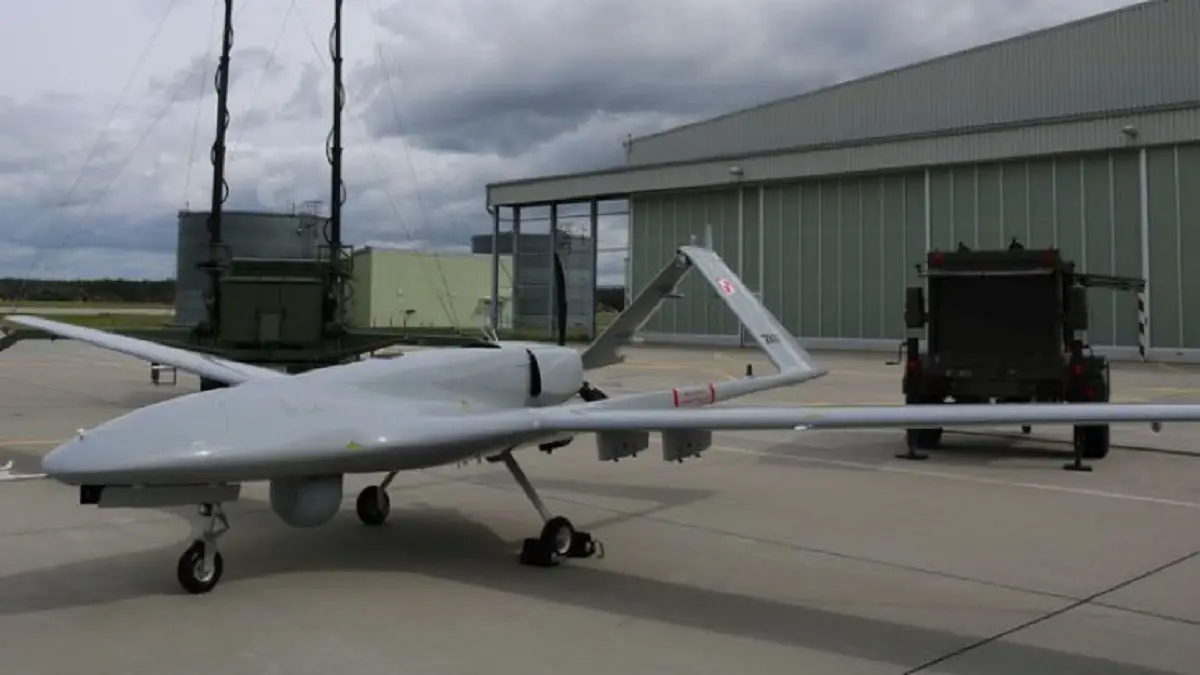On October 6th, the Polish Armed Forces officially welcomed the arrival of their third set of the Bayraktar TB2 medium-range unmanned reconnaissance and combat aerial vehicle at the 12th Unmanned Aerial Vehicle Base in Miroslawiec. Prior to their arrival in Poland, these unmanned aerial systems underwent rigorous testing in Turkey. Upon reaching Polish soil in September, they successfully completed the final tests required for their official acceptance. The unmanned aerial vehicle set for the Polish Armed Forces is comprehensive, comprising six unmanned aerial vehicles, three ground control stations, as well as advanced reconnaissance equipment and sensors, among other components. Furthermore, under this contract, the acquisition of intelligent laser-guided weapons of the MAM-L and MAM-C variants will further enhance the system’s capabilities, enabling the execution of a wide range of tactical missions in alignment with its operational objectives.
The initial set was delivered to the Polish Armed Forces in the autumn of 2022, and training for the first cadre of instructors and system operators, hailing from the 12th Unmanned Aerial Vehicle Base in Miros?awiec and the Engineering and Aviation Training Center in D?blin, has been successfully concluded. The second set was received during the spring of 2023. These deliveries of the Bayraktar TB2 system stem from the agreement reached on May 24, 2021, between the Armament Inspectorate and Baykar Makina Sanayi ve Ticaret AS. According to the agreement, the contractor is slated to deliver a total of four Bayraktar TB2 BSR-U sets, complete with ground control stations, between 2022 and 2024. Additionally, the contract encompasses SAR radars, simulators, an extensive training and logistics package, as well as a comprehensive spare parts package.

The Bayraktar TB2 is a medium-altitude long-endurance (MALE) unmanned combat aerial vehicle (UCAV) capable of remotely controlled or autonomous flight operations. It is manufactured by the Turkish company Baykar Makina Sanayi ve Ticaret A.S., primarily for the Turkish Armed Forces. The aircraft are monitored and controlled by an aircrew in a ground control station, including weapons employment. The development of the UAV has been largely credited to Selçuk Bayraktar, a former MIT graduate student. The ground control station (GCS) is based on a NATO spec shelter unit which is equipped with cross redundant command and control systems. The mobile unit supports three personnel: pilot, payload operator and mission commander. The GCS is equipped with redundant air conditioners and nuclear, biological and chemical filtration (NBC) filtering unit. Each operator has dual screens in front along with the operator interface software used for real-time command, control and monitoring.
MAM (Mini Akilli Mühimmat, smart micro munition) is a family of laser-guided and/or GPS/INS guided bombs for unmanned aerial vehicles (UAV) produced by Turkish defence industry manufacturer Roketsan. MAM can engage both stationary and moving targets with high precision. The main difference between the MAM-L and MAM-C Smart Micro Munition is their size, weight, and range. The MAM-L is larger and heavier, with a range of 15 km, while the MAM-C is smaller and lighter, with a range of 8 km. The MAM-L is also available with a wider range of warheads, including high explosive blast fragmentation, armor-piercing, and thermobaric. The MAM-C is only available with a high explosive blast fragmentation warhead. The MAM-L has an optional inertial navigation system (INS)/global positioning system (GPS) guidance system, which allows it to operate in environments where GPS is unavailable.
Zwi?kszamy bezpiecze?stwo Polski. Kolejne drony Bayraktar s? ju? po testach w 12 Bazie Bezza?ogowych Statków Powietrznych w Miros?awcu. Dzi? zako?czyli?my odbiór trzeciego zestawu bezza?ogowców! pic.twitter.com/qcE10O7WFl
— Mariusz B?aszczak (@mblaszczak) October 6, 2023















